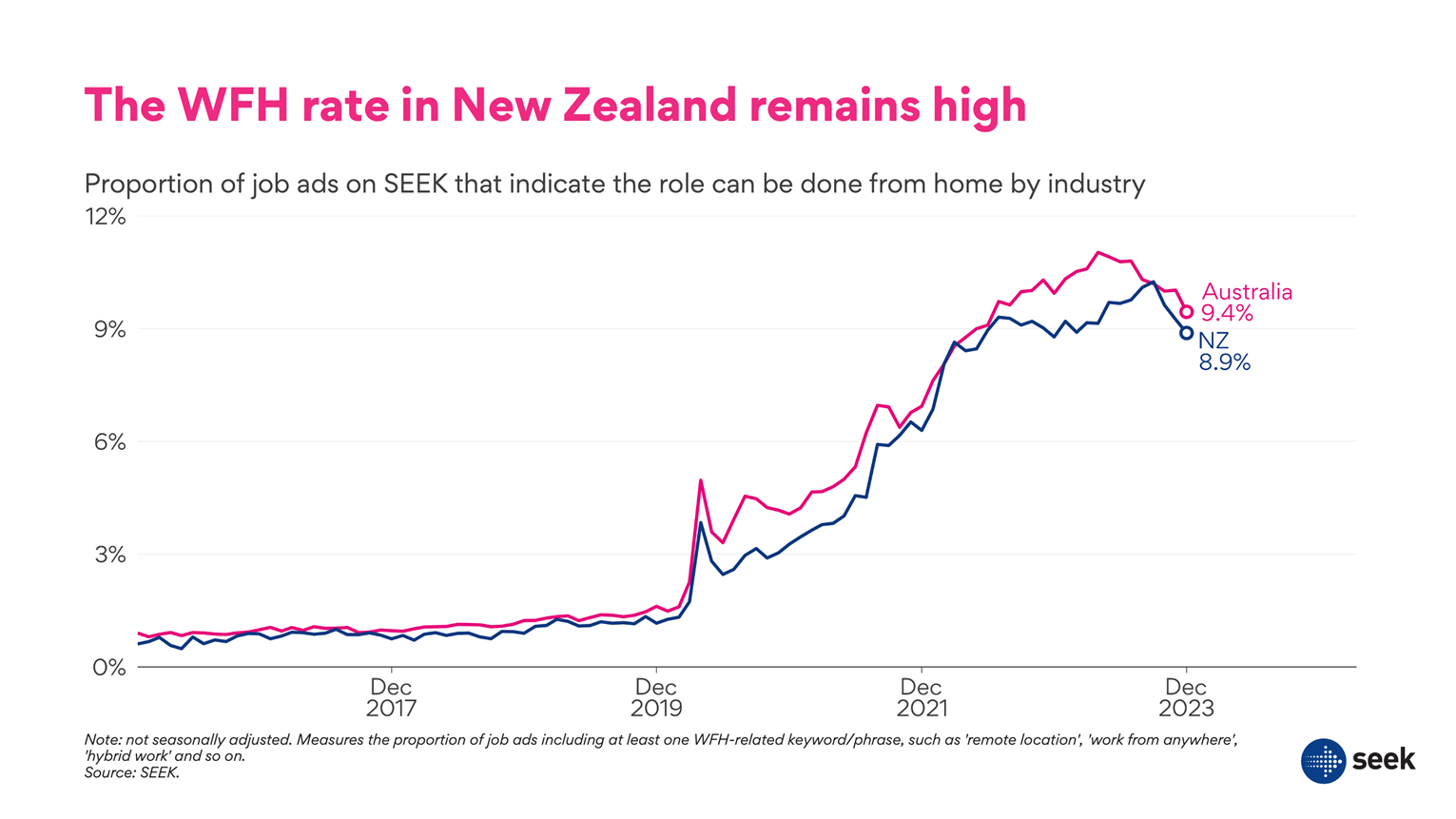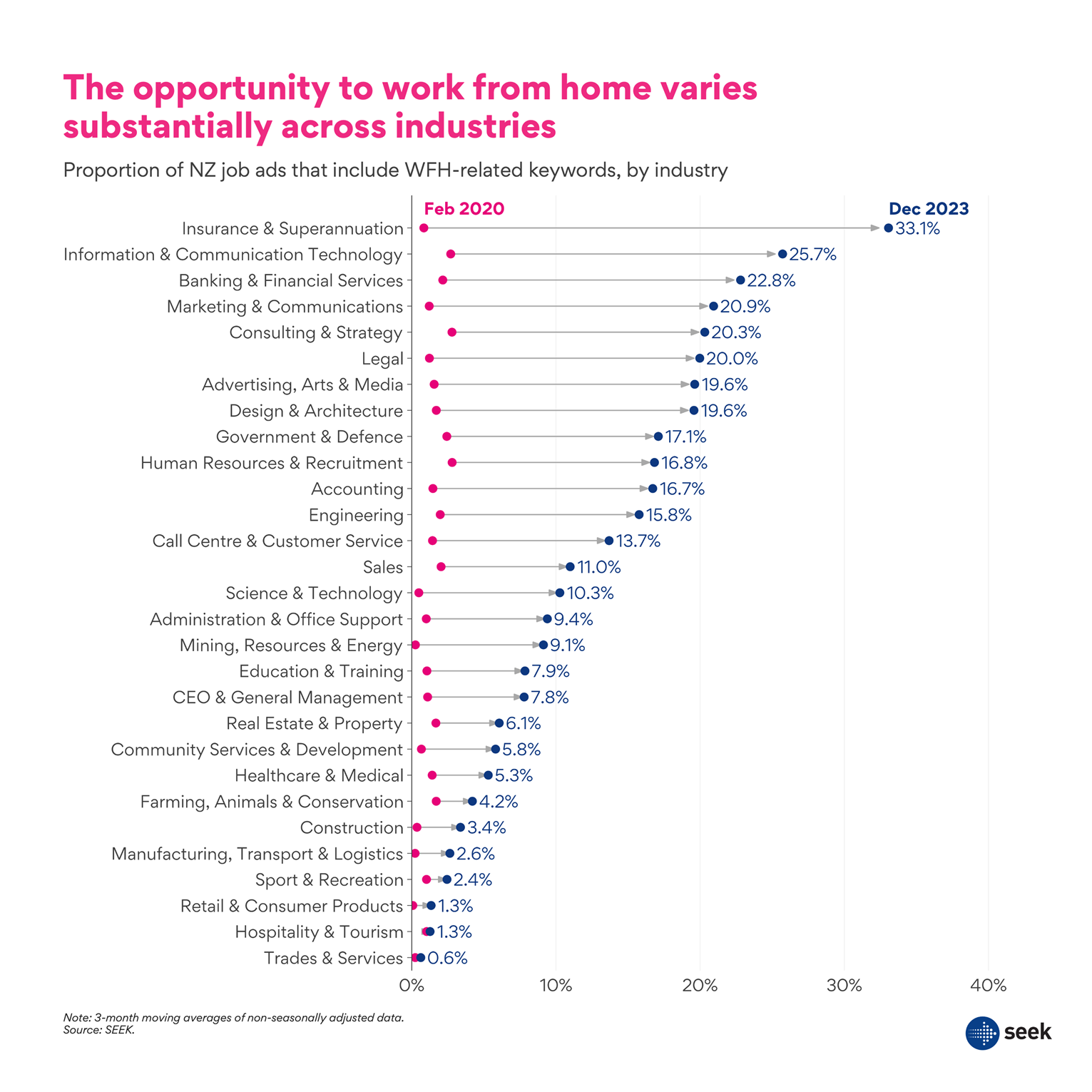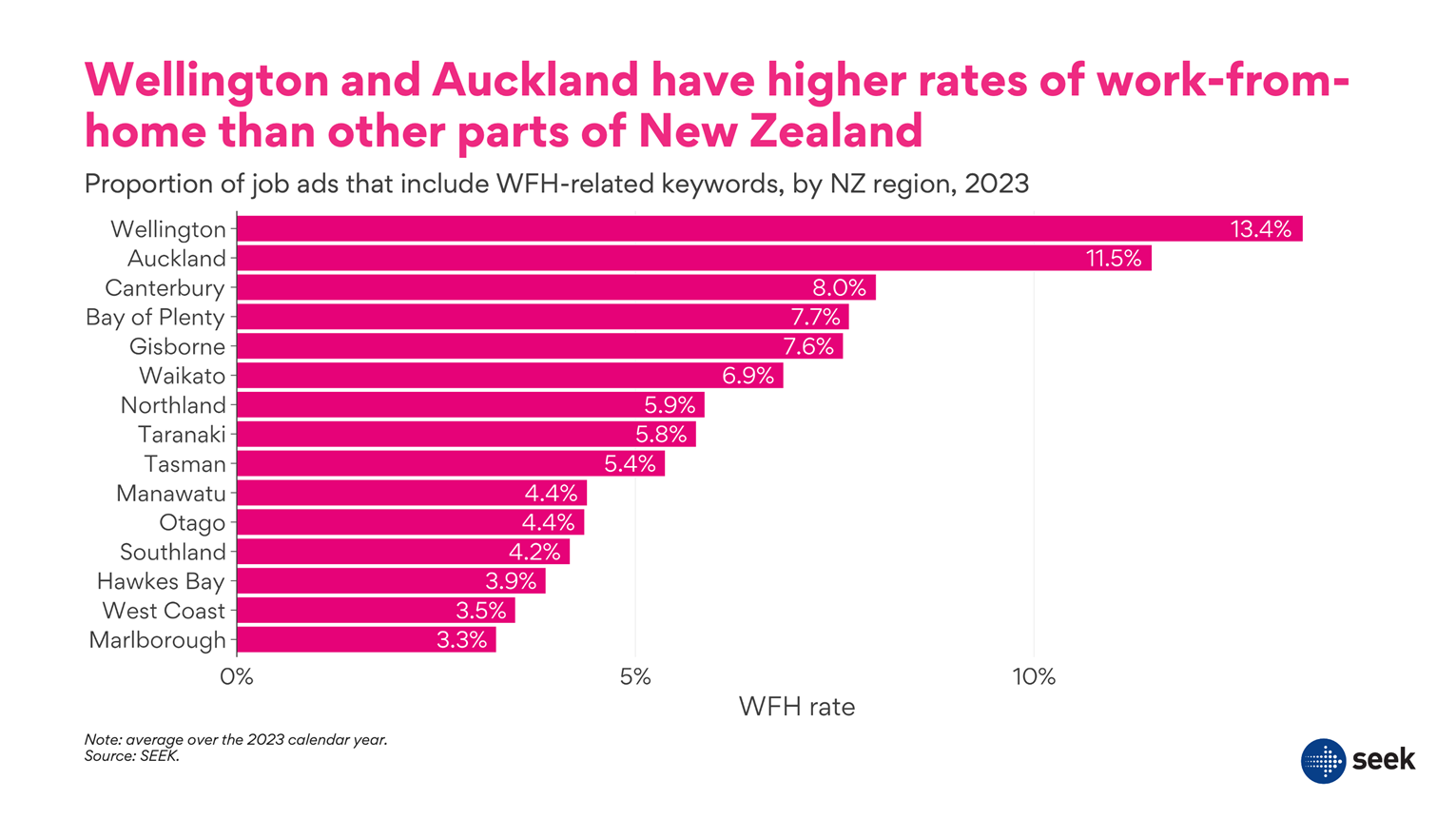Economist Insights
Work-from-home rate still high in New Zealand
Around 10% of job ads indicate the role can be done from home
Before COVID hit, it was rare for New Zealanders to work from home (WFH). Only 1.3% of job ads in February 2020 indicated that the role could be done from home. Now, the proportion of job ads that indicate they can be done from home – what we call the ‘WFH rate’ – is much higher, at 8.9% in December 2023. This is a touch below the WFH rate in Australia, but the rise of work-from-home has followed a broadly similar pattern in NZ as in other advanced economies since 2020

We measure the WFH rate by counting how many job ads indicate that the role can be done remotely, as a proportion of all job ads in a particular month. To do this, we look for ads that include at least one WFH-related keyword or phrase, such as “hybrid work”, “work from anywhere”, and so on. SEEK’s unique data, covering tens of thousands of newly-advertised jobs every month in New Zealand, means we can track these trends over time.
Even as the labour market has cooled, the WFH rate has remained high. Over the course of 2023, the demand for workers in NZ fell, with the number of job ads on SEEK NZ down 24.5% in the year to December. The average number of applications per ad more than doubled in 2023.
Employers are finding it easier to attract applicants to vacant roles than they were in 2021 or 2022, but they have not responded by reducing the proportion of job ads that offer the ability to work from home. The WFH rate remains high despite the labour market balance tipping back towards a more normal balance between supply and demand.
The WFH rate did fall a touch from its high of 10.3% in September 2023 to 8.9% in December, but remains higher than it was in early 2022 when COVID restrictions were phased out. The WFH rate is around where it was in much of 2022, when labour demand was much stronger than at the end of 2023.
WFH is a white collar phenomenon
Before COVID hit, the WFH rate was very low in all industries, not rising above the low-single digits in any industry. Now, the story is very different. In Insurance & Superannuation, around a third of jobs advertised in NZ indicate that they can be done from home. The WFH rate is around a quarter in ICT and Banking & Financial Services. If we look at sub-industries, the highest WFH rates are found in outbound sales (44%), insurance underwriting (41%) and web development (39.2%).
At the other end of the scale, the nature of some industries means that their work must be done almost entirely in person. Trades & Services, Hospitality & Tourism, and Retail & Consumer Products all feature WFH rates of around one-in-100, barely higher than they were pre-COVID. There are a range of sub-industries where the WFH rate in 2023 was zero – for example, paramedics, high acuity nurses, and kitchen hands.

Although the overall WFH rate has soared since 2020, this is largely driven by white collar, office-based industries.
WFH is much more common in cities
Because the ability to work from home varies so much across different types of jobs, it also varies a lot across the different regions of New Zealand, given that white collar office jobs are not evenly spread throughout the country. Wellington (13.4%) and Auckland (11.5%) have the highest WFH rates, with Marlborough (3.3%) the lowest rate.

The WFH story is not over
Labour markets have not yet settled down after the dramatic lurches of the COVID period, from lockdowns to the booming market conditions of 2022. It’s not yet clear where the WFH rate will settle, in NZ or elsewhere.
On the one hand, many employees are still very keen on the ability to work from home, with WFH-related phrases ranking at or near the top of most-commonly-searched on SEEK, and the COVID experience has proven that many jobs can be done from home. On the other hand, at least some employers have flagged their intention to reduce the prevalence of WFH, whether that means increasing the number of in-office days for hybrid workers or eliminating WFH altogether in some cases.
A loosening in the labour market, with unemployment rising a little and fewer jobs on offer, may mean that employers are more able to attract and retain candidates even if they reduce opportunities to work from home. But employers who move aggressively to reduce their WFH rate may still find that they lose workers to competitors who offer the ability to WFH.
Over time, it’s likely that labour markets in NZ and elsewhere will reach a more stable point. We’re not there yet. A prominent economist has predicted that the WFH rate will follow a “Nike swoosh” – a short-term decline as labour markets soften, followed by a longer-term rise. 2024 may see modest declines in the WFH rate, but that’s not likely to be the end of the story.
-ENDS-